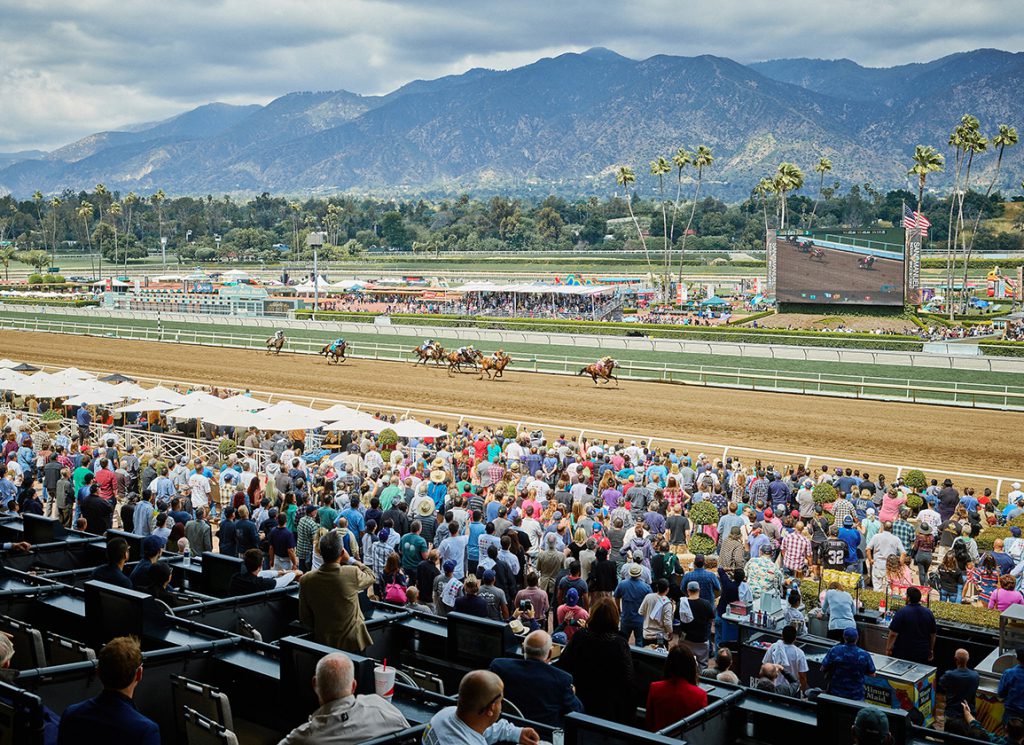Ahead of a critical California Horse Racing Board (CHRB) meeting Thursday to decide essentially whether or not to give Northern California stakeholders a fighting chance to build a circuit in the void left by the imminent closure of Golden Gate Fields, 1/ST Racing and Gaming set out their stall Tuesday in a letter to the regulator urging them to decline race dates to the North.
In a proposal to the state regulator, the California Association of Racing Fairs (CARF) outlined a 10-week meeting this year that would run from Oct. 19 to Dec. 15 at Pleasanton.
If the CHRB affords those dates to the north, 1/ST Racing and Gaming executive vice-chairman, Craig Fravel, warned of several consequences, including purse cuts at Santa Anita, reevaluation of planned investment projects at Santa Anita, and the “analysis of alternate uses” for Santa Anita and San Luis Rey.
“While this is understandably disconcerting to owners, trainers, and workers in the North the ultimate survival of the full ecosystem is at risk,” wrote Fravel.
On Wednesday, CARF issued a statement saying that while they did not have a great deal of time to put a plan together, “we did have an incredible depth of experience.”
“We brought together the best and the brightest of our sport. Our commitment was to develop a horse racing plan that is modern, enhances the economic and social health of the community, is safe for the horses and jockeys, fun for our fans and generates excitement in Northern California,” wrote Larry Swartzlander, CARF executive director, justifying the North's plan in several bullet points, including how “Alameda provides a financially sound location.”
“We anticipate more dynamic racing fields–higher purses and betting opportunities that enhance the fun,” wrote Swartzlander. “At the same time, we have adhered closely to ideas offered by experts as we continue focusing on the health of our horses and jockeys.”
In Tuesday's letter to the CHRB, Fravel questioned one of the potential logistical hurdles standing in the way of CARF's proposal: A golf course that operates on the Pleasanton infield.
“There is clearly a contractual issue with the golf operator that is not disclosed in the materials and extremely vague language regarding protocols that will be implemented,” wrote Fravel.
In a prior letter to CHRB chair, Greg Ferraro, members of the California Thoroughbred Trainers (CTT) and the Jockey's Guild urged the board to support year-round racing in the North, arguing that issues with the infield golf course had already been addressed.
“Active play and access to the golf course will continue to be strictly prohibited during racing hours as has been done in the past,” the letter states.
“Horse racing and the golf course are both important to the community. It does no good to permanently close the golf course only to anger the community. Horse, rider, and personnel safety remains the single greatest priority; however, we firmly believe both can coexist–as has been successfully done for over 40 years,” the letter adds.
“Nets surrounding the golf course provide cover, and since they have been put in place, there have been no accidents. In addition, Alameda County Fair will actively manage and limit play and course activities during training to areas of the course that pose little risk to balls being hit on to the track. For example, these managed activities will include supervised youth programs like the First Tee,” the letter states.
In a brief call Wednesday with owner-breeder Justin Oldfield–part of a working group geared around cultivating the plan–he said that CARF has put forward a proposal that meets all the CHRB's required conditions.
“Tomorrow, it's absolutely imperative that the CHRB weigh in and award us dates based on the merits of that plan,” he said.
“We have a lawful and tested racing association that's going to manage the meet. We have financing that's been put up as seed money that shows the strength of the 13 member fairs within CARF,” said Oldfield.
“People want to stay here,” Oldfield added. “There are families. Businesses. There's an agricultural component to this. Three-quarters of the horses in the North are Cal-Bred. Look, those horses aren't going to go south.”
Outspoken owner-breeder Tom Bachman said Wednesday that 1/ST's letter to the CHRB comes after too many cuts to the industry by the company and too little investment.
“They should be trying to make the pie bigger rather than trying to take a bigger piece of a shrinking pie,” said Bachman. “They do the opposite of what they should be doing.”
As for potential purse cuts at Santa Anita, earlier this week the California Thoroughbred Breeders Association (CTBA) announced how purse bonuses paid to California-breds that win maiden races would be sliced when Santa Anita's spring meet begins on Apr. 19, as first reported by the DRF.
The bonuses–which are being cut from $17,500 to $15,000–are paid to maiden winners in open company or state-bred races at races at 4 1/2 furlongs or more.
The post CARF Issues Statement After 1/ST Ultimatum on NorCal Racing Dates appeared first on TDN | Thoroughbred Daily News | Horse Racing News, Results and Video | Thoroughbred Breeding and Auctions.

